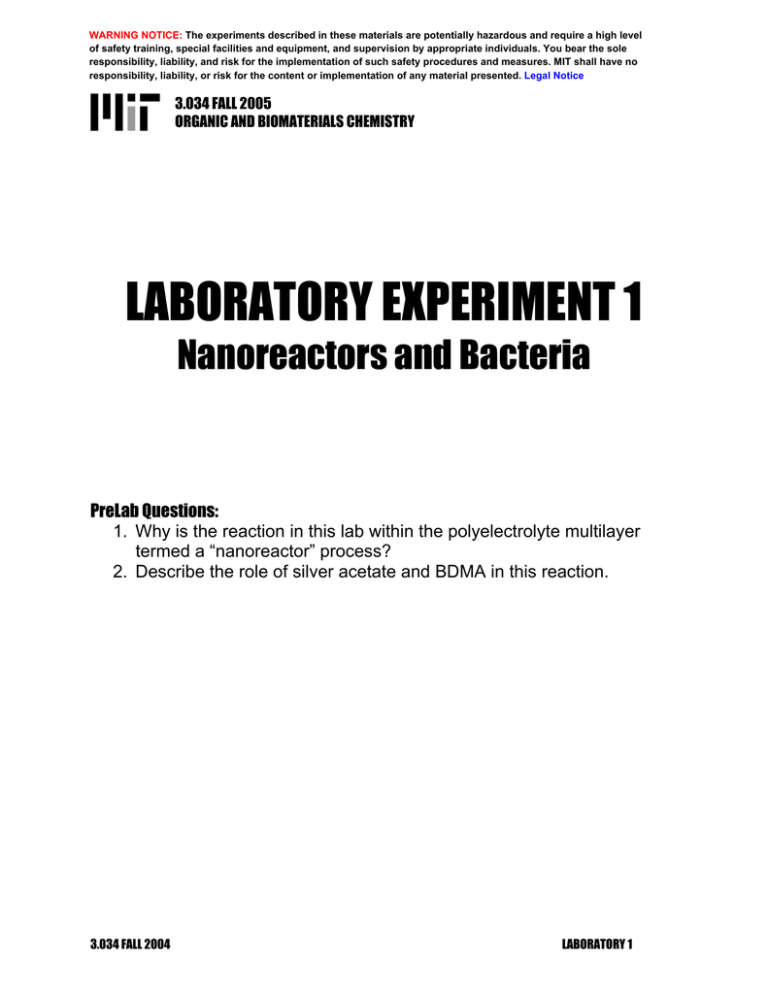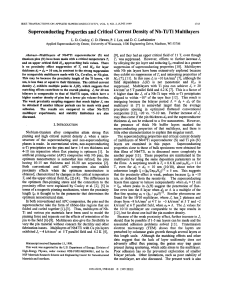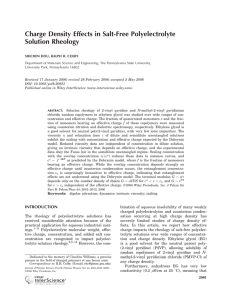Document 13551735
advertisement

WARNING NOTICE: The experiments described in these materials are potentially hazardous and require a high level of safety training, special facilities and equipment, and supervision by appropriate individuals. You bear the sole responsibility, liability, and risk for the implementation of such safety procedures and measures. MIT shall have no responsibility, liability, or risk for the content or implementation of any material presented. Legal Notice 3.034 FALL 2005 ORGANIC AND BIOMATERIALS CHEMISTRY LABORATORY EXPERIMENT 1 Nanoreactors and Bacteria PreLab Questions: 1. Why is the reaction in this lab within the polyelectrolyte multilayer termed a “nanoreactor” process? 2. Describe the role of silver acetate and BDMA in this reaction. 3.034 FALL 2004 LABORATORY 1 I. Introduction It has been known since ancient times that silver provides an antibacterial surface. This is why, for example, silverware actually used to be made from Ag and religious ceremonies in which many people drink wine from the same chalice still use silver vessels. A modern example of this antibacterial property of silver is demonstrated by a fabric marketed for sports clothing, called X-Static, which contains 15 vol% silver fibers (Fig. 1). Figure 1. Polartec® PowerDry® feature XStatic®, advertised to “eliminate 99% of bacteria to give garments permanent natural odor protection.” X-Static website: http://www.cloverbrook.com/xstaticpage.htm. Image removed due to copyright reasons. In this laboratory experiment, you will synthesize Ag nanoparticles within an ultra-thin polymer film known as a polymer multilayer (PEM) through a reduction reaction. Because the reaction volume is determined by the molecular organization within the multilayers, the thin film itself acts as a nanoreactor to define the final size of the Ag particles. This is because the metal ions in a silvercontaining solution (Ag+) attach to the polymer by exchanging with hydrogen in, for example, carboxylic groups of the polymer, and then reduce to metal particles (Ago) by exchanging with hydrogens in, for example, the amine groups of a second chemical such as a diamine. Thus, the polymer multilayer is a nanoreactor that is capable of creating uniformly dispersed, nanometer sized particles of Ag metal (~2 – 4 nm diameter). You will characterize the Ag content of the samples through UV-Vis spectroscopic analysis of energy absorption, and correlate this Ag content with the ability of these Ag-loaded multilayers to kill bacteria that are seeded and cultured on the surface. II. Objectives The goals of this laboratory experiment are to: • Synthesize silver nanoparticles through a reduction reaction within the polyelectrolyte multilayers (PEMs) • Estimate the extent of Ag-loading through energy absorbance spectroscopy and comparison to literature data • Seed bacteria onto PEMs and quantify the number of bacterial colonies produced as a function of Ag-loading. 3.034 FALL 2005 2 LABORATORY 1









